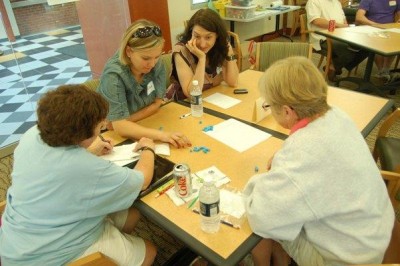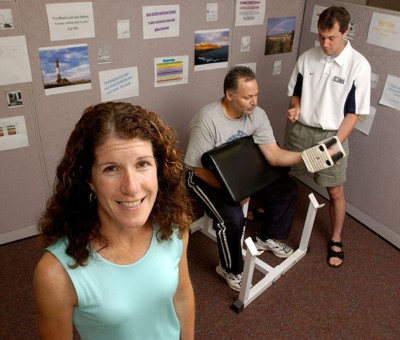
Linda Pescatello, a professor of kinesiology in the Neag School of Education, and a Center for Health, Intervention, and Prevention (CHIP) Principal Investigator is being awarded the American College of Sports Medicine (ACSM)’s 2011 Citation Award. The Citation Award is the ACSM’s second-highest honor.
The ACSM is the largest sports medicine and exercise science organization in the world, with a stated mission of promoting and integrating scientific research, education, and practical applications of sports medicine and exercise science to maintain and enhance physical performance, fitness, health, and quality of life.
Dr. Pescatello will receive the award at the ACSM’s Annual Meeting in Denver on June 3rd in recognition of her overall contributions to exercise science and her numerous years of service to the ACSM through various committees and board positions.
“Professor Pescatello exemplifies the cross-cutting expertise of an ACSM leader in making significant contributions to research and scholarship, clinical care and education, particularly related to the areas of hypertension and exercise genomics,” ACSM Immediate Past President Mindy Millard-Stafford wrote in her introduction of Pescatello for the ACSM awards ceremony.
Pescatello was nominated for the award by her ACSM colleagues, including Millard-Stafford and another ACSM past president who together noted her “great leadership to help formalize an evidence-based process” for ACSM position stands.
The ACSM publishes position stands when enough research has been completed to support a position on scientific grounds. According to its web site, its pronouncements, including position stands, “are advisory only, but they carry considerable weight in the development of policy by rulemaking committees, and of standards set forth by professional organizations and governmental bodies.”
Janice Thompson, a professor of public health nutrition at the University of Bristol and a past chair of the ACSM’S Pronouncements Committee, which manages all aspects of the ACSM’s position stand development, noted Pescatello’s “dedication, strong work ethic, impressive organizational and leadership skills, and high scientific standards” in her letter of support for Pescatello’s nomination for the Citation Award.
“Her research is amongst the best in the world, and I have been able to incorporate many of her findings into my nutrition-related research and teaching programs. She has also been directly responsible for putting into place important, substantial changes in the policies and procedures of ACSM’s Pronouncements Committee, and her contributions have directly resulted in the publication of the highest quality position stands,” Thompson wrote. “I consider her not only a peer, but a role model in many ways…. She maintains a cool head when others are not able to do so, and her steadfast, fair, and consistent behaviors are truly invaluable in all areas of academe.”
Pescatello began her career as a high school biology and chemistry teacher and a track and basketball coach. After earning her Ph.D. in Exercise Science at UConn, she worked for 15 years at New Britain General Hospital, first as manager of the hospital’s Cardiac Rehabilitation Program and then director of its Department of Health Promotion. Pescatello joined the UConn faculty in 1998.
A prolific researcher, Pescatello serves, or has served, as principal or co-investigator on a number of federal grant awards totaling more than $16 million – including six active grants. She also currently has two active internal UConn grants and five additional grant applications (including internal UConn, ACSM and federal awards) submitted and pending.
Pescatello has published more than 150 peer-reviewed journal articles and book chapters and she has a new book, Exercise Genomics, being published by Humana Press this month.
Through federal grants, Pescatello and colleagues currently are studying statins’ effects on muscle function, exercise as an intervention for hazardous drinking college students, non-treatment seeking adults with alcohol disorders and cocaine abusers, and the use of prize incentives to promote physical activity for HIV substance abusers and to promote weight loss in college students.
Her active internal grants are focused on comparing the immediate after-effects of aerobic and ischemic handgrip exercises on blood pressure and vascular function.
Among Pescatello’s contributions to ACSM, she has served as vice president, chair of its pronouncements committee, and associate editor and now senior editor of the ACSM’s Guidelines for Exercise Testing and Prescription. She also was responsible for the organization’s first evidence-based position stand, which addressed hypertension, and now is working to create a database to further the ACSM’s goal of making all of its position stands and guidelines evidence-based.
Finally, the colleagues who nominated Pescatello for the Citation Award noted her excellent mentoring skills, witnessed in action with her students who routinely accompany and present with her at ACSM annual meetings, and the public service she has performed for the exercise science profession by translating her work for the public by publishing numerous educational articles geared to fitness instructors.
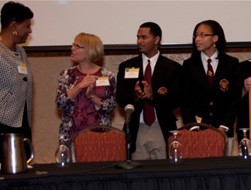
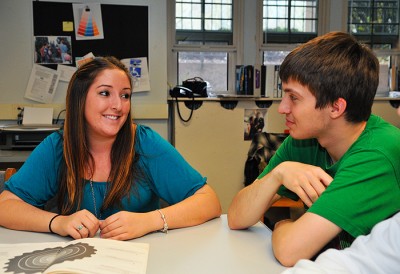

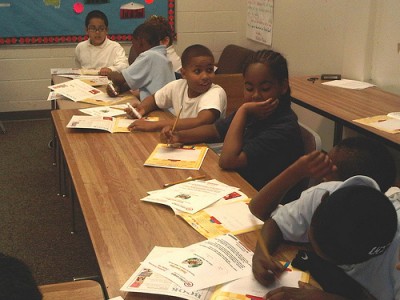
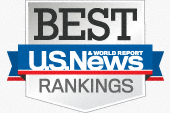 The
The  Dear Alumni and Friends of the Neag School of Education:
Dear Alumni and Friends of the Neag School of Education: